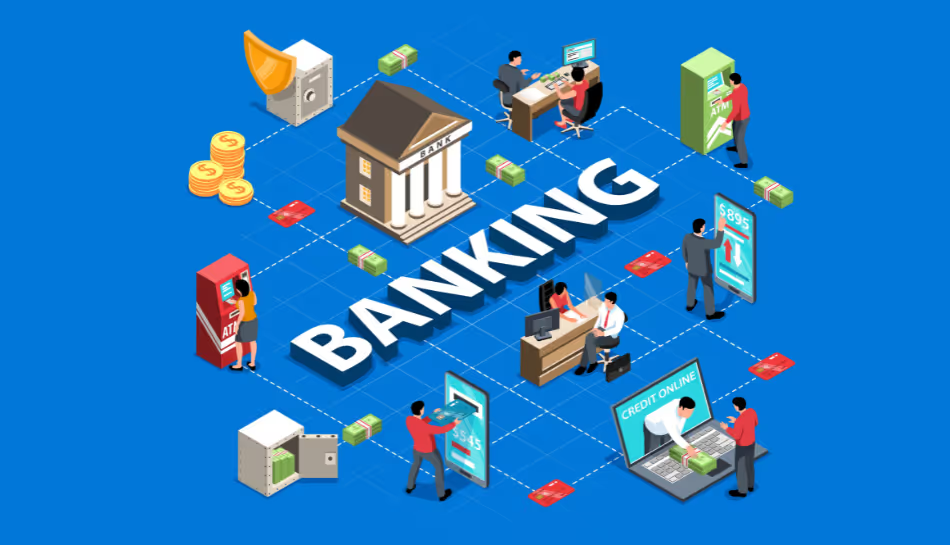
The modern banking industry is highly regulated and competitive. With rapid technological changes, evolving customer expectations, and growing security concerns, traditional banking methods are no longer enough to meet modern demands. To thrive in this dynamic ecosystem, banks are turning to advanced banking software to tackle these challenges head-on.
From enhancing operational efficiency to improving compliance and customer service, modern bank software solutions are transforming the way banks operate.
Key Challenges Faced by Banks
Before diving into how software helps, it’s important to understand the core issues banks typically struggle with:
- Manual Processes: Traditional banking involves time-consuming manual tasks prone to human error.
- Regulatory Pressure: Compliance with ever-changing financial regulations is complex and resource-intensive.
- Cybersecurity Threats: With more digital transactions, banks are highly vulnerable to cyberattacks and data breaches.
- Customer Expectations: Today’s customers expect instant, 24/7 service with seamless digital experiences.
- Operational Inefficiencies: Legacy systems and siloed departments lead to delays, errors, and higher operational costs.
Let’s explore how banking software systems help banks overcome these challenges.
1. Automating Manual Processes
Account administration, loan processing, and transaction monitoring are just a few of the time-consuming and repetitive operations that are automated by modern banking software. Automation speeds up operations, reduces the risk of errors, and frees up staff for more value-driven roles.
For example, software-driven loan origination processes can cut approval times from days to hours, enhancing both efficiency and customer satisfaction.
2. Streamlining Compliance and Reporting
For banks, maintaining compliance with financial regulations is essential. Bank software solutions include built-in compliance modules that help track regulatory requirements, generate reports, and flag potential violations.
By automating compliance monitoring, banks can reduce the risk of penalties and audits while maintaining transparency with regulators. This also ensures a more consistent and centralized documentation process.
3. Enhancing Cybersecurity and Data Protection
Security is a top priority for banks, especially with the rise of digital banking. Modern banking software systems incorporate robust security features such as multi-factor authentication, end-to-end encryption, and AI-powered threat detection.
These systems monitor for unusual activity in real time and can automatically block suspicious transactions, significantly reducing the risk of fraud and data breaches.
4. Improving Customer Experience
Customers now expect fast, personalized, and secure services on any device, at any time. Bank software solutions enable omnichannel banking, where services are available seamlessly across web, mobile, and in-branch platforms.
Additionally, software with integrated customer relationship management (CRM) can personalize offerings, automate notifications, and respond to queries faster. This not only boosts customer retention but also helps attract new clients looking for digital convenience.
5. Centralizing Data and Decision Making
Legacy systems often isolate customer, financial, and operational data across departments, leading to miscommunication and inefficiencies. Banking software centralizes data on a unified platform, enabling better decision-making through real-time insights and analytics.
With access to accurate, up-to-date information, banks can make informed decisions about credit risk, investment strategies, and customer service enhancements.
6. Enabling Scalability and Innovation
Modern banking software systems are often modular and cloud-based, making it easy to scale operations as business needs grow. Whether a bank wants to expand its services, enter new markets, or adopt emerging technologies like AI or blockchain, robust software infrastructure provides the necessary agility.
This scalability also supports innovation, allowing banks to experiment with new digital services and tools without overhauling their entire IT environment.
Conclusion
As banking becomes increasingly digital and customer-centric, the challenges are only going to grow. However, with the right bank software solutions, institutions can automate processes, strengthen compliance, enhance security, and deliver exceptional customer service.
Banking software is no longer just an operational tool, it’s a strategic asset that empowers banks to overcome today’s challenges and future-proof their services for tomorrow. For banks looking to remain competitive and efficient, investing in modern bank software systems is not just beneficial... it’s essential.

